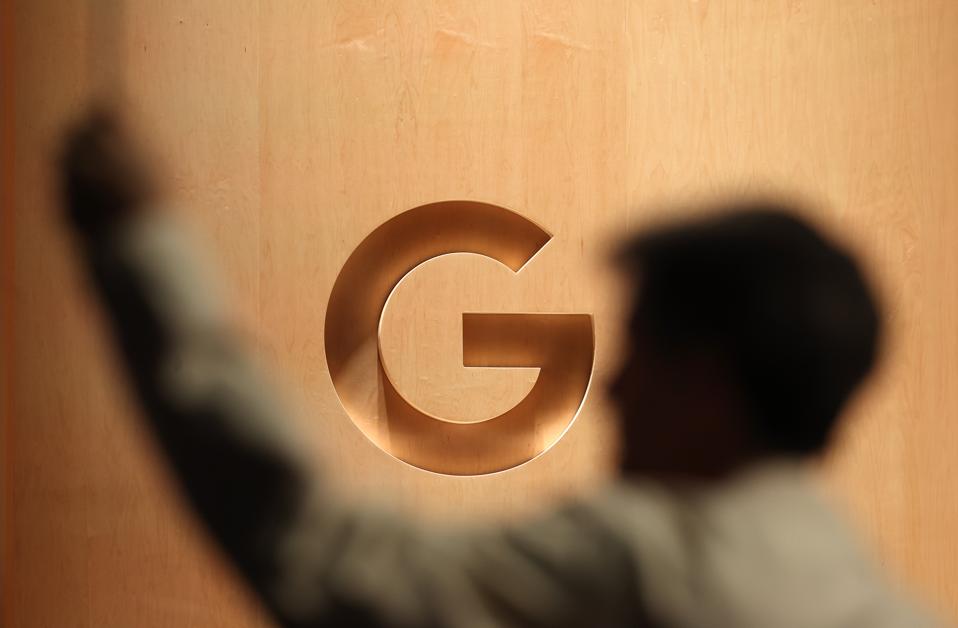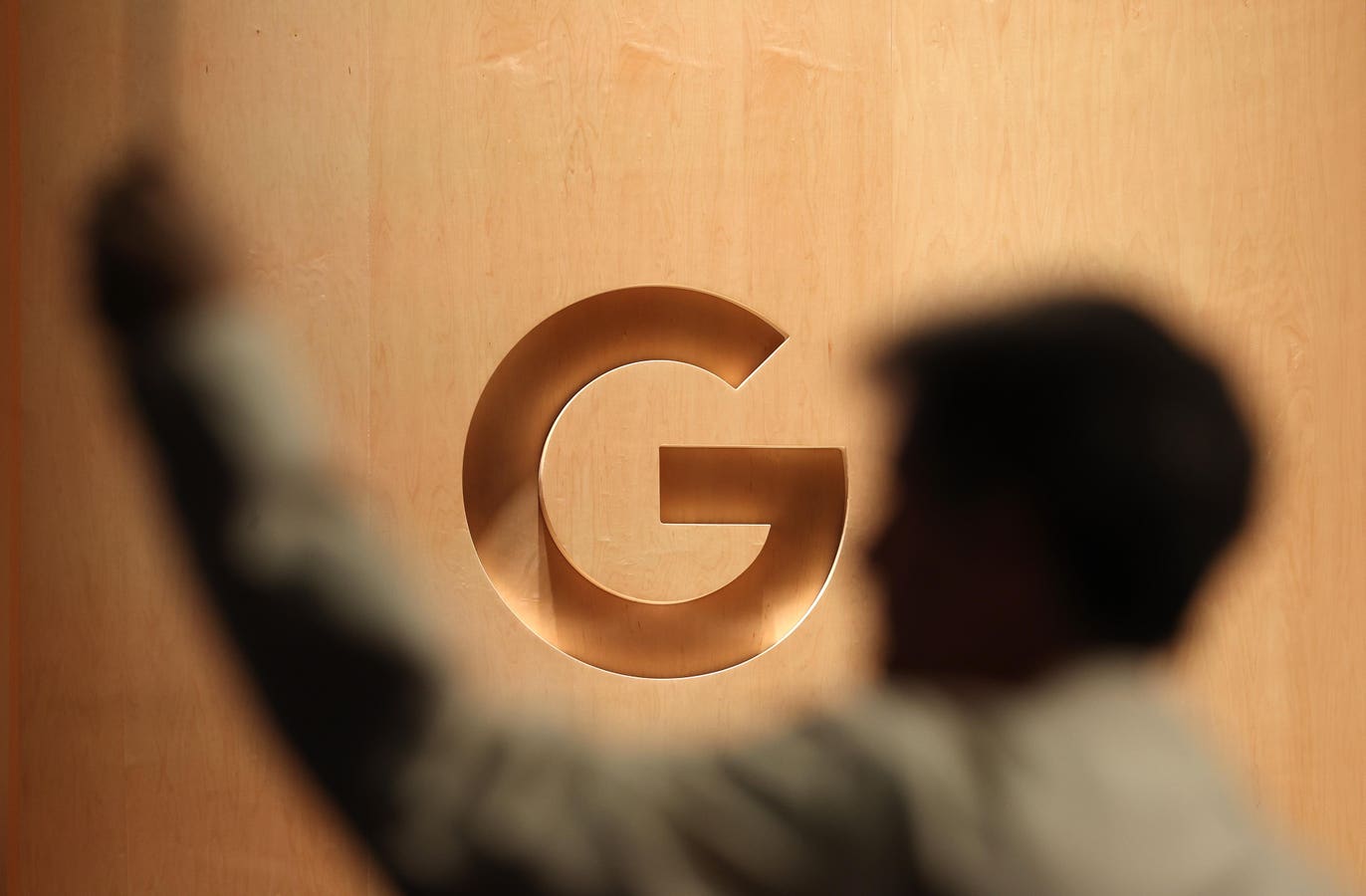
MOUNTAIN VIEW, CALIFORNIA – AUGUST 13: The Google logo is displayed during the Made By Google event at Google headquarters on August 13, 2024 in Mountain View, California. Google announced new Pixel phones, watches and AI features during the Made By Google event. (Photo by Justin Sullivan/Getty Images)
Getty Images
Amid evidence of an online catastrophe for publishers both large and small, Google is officially challenging the narrative that its AI Overviews tool is leading people to click into search engine results pages less frequently.
The rebuttal comes through a now-prominent blog post by Google VP and Head of Search Liz Reid, who is contending that regardless of the numbers, the addition of the AI blurb at the top of a search is leading to more “quality clicks.”
“Overall, total organic click volume from Google Search to websites has been relatively stable year-over-year,” Reid wrote Aug. 6. “Additionally, average click quality has increased and we’re actually sending slightly more quality clicks to websites than a year ago (by quality clicks, we mean those where users don’t quickly click back — typically a signal that a user is interested in the website).”
Quality Time with Google
So the idea is that users will drill down deeper into things, spurred on by the introduction made by the AI tool. But this misses the point: it’s the loss of aggregate traffic that hurts publishers and those trying to garner attention online, and since Google has had a practical monopoly on search for, well, decades, the impact of fewer clicks is big.
But rather than leave it there, Reid added:
“This data is in contrast to third-party reports that inaccurately suggest dramatic declines in aggregate traffic — often based on flawed methodologies, isolated examples, or traffic changes that occurred prior to the roll out of AI features in Search.”
The reader can assume that “this data” refers to the first line, the organic click volume remaining “relatively stable year-to-year” and not to the rest of it. However, outside parties are specifically taking aim at the former claim, noting that Google does not provide data to counter studies like those by Pew that definitely show lower levels of click-through traffic.
With Their Own Eyes
In addition to Pew’s research, critics of the Google response point to their own evidence.
“Do the hundreds of thousands of Google Search Console [GSC] screenshots showing impressions remaining flat (or increasing) this year, while clicks dramatically decline – since AI Overviews were rolled out more broadly – count as ‘flawed methodologies’ or ‘isolated examples’?” writes Amsive Vice President of SEO Strategy & Research Lily Ray. “Thousands of us are seeing it… but it must just be some big coincidence?”
“Gaslighting of the highest order,” adds Florentina Schinteie, SEO Strategist for In-House Teams and Former Head of SEO at DesignRush.
The Re-Skilling of the Web
Here’s another bit from the above blog post:
“While overall traffic to sites is relatively stable, the web is vast, and user trends are shifting traffic to different sites, resulting in decreased traffic to some sites and increased traffic to others. People are increasingly seeking out and clicking on sites with forums, videos, podcasts, and posts where they can hear authentic voices and first-hand perspectives. People are also more likely to click into web content that helps them learn more — such as an in-depth review, an original post, a unique perspective or a thoughtful first-person analysis. Sites that meet these evolving user needs are benefiting from this shift and are generally seeing an increase in traffic.”
This seems in some ways eerily similar to the arguments of big bosses bullish on AI in the job market. Old jobs, they admit, will go away, but new jobs, they contend, will also be created. So it’s a wash. Well…
Workers will have to re-skill, then – what does that look like? The burden, you’d assume, would be on the workers themselves, which is convenient for whoever’s moving the goalposts. The same concept is in play here. Reid suggests it’s on the publishers to quickly add content … forums? Podcasts?
But all of that aside, that first claim of the “stability” of traffic is under fire. It’s not just Pew, either.
“Research by AI search and SEO platform Authoritas, submitted as part of a legal complaint to the UK’s Competition and Markets Authority, found that when an AI Overview is present, publishers are seeing a drop of 47.5% in per-query clickthrough rate on desktop, and 37.7% on mobile,” wrote Charlotte Tobitt Aug. 7 at PressGazette. “Similarweb data found that among the top 100 news and media websites globally, the average rate of zero-click searches has gone from 50.5% to 52.7% in the past year. Among a wider dataset, zero-click news searches were said to have increased from 56% when AI Overviews were first launched in the US in May 2024 to almost 69% in May this year.”
Publishers also report huge losses in traffic.
Covering this last week, I cited this article in Columbia Journalism Review, which lays out some of these claims. For those who are skeptical about Reid’s post, as a stand-in for a larger Google response: it’s the numbers. The claim just doesn’t seem credible, and no one from Google is coming up with any real proof.
Panda and Penguin
Another way to view Google’s side of the issue, represented by Reid’s arguments, is that the addition of AI Overviews is just like former Google algorithm changes, like Panda in 2011, and Penguin in 2012. These shifts were done with the stated goal of meeting user needs and driving positive change. Advertisers had to scramble. Digital marketers had to adapt by crafting content and sites to attract the priorities of the “new boss” of Google favor. Conceptually, the same is true here – but the shift is much bigger, and the paradigm changes a lot more.
The result appears to be a showdown between Google (which, in classical Marxian parlance, owns the means of production) and publishers, who, absent some course correction, may be left out in the cold, with simple admonitions to get started podcasting.

